Abstract
An immunoglobulin M (IgM) capture enzyme immunoassay technique was adapted for the detection of antibody to Colorado tick fever virus in sera from 84 individuals for whom diagnosis had been confirmed by virus isolation or neutralization test. Titers were compared with those for IgG and neutralizing antibodies in these Colorado tick fever cases. IgM antibody titers were higher than neutralizing antibody titers, but neither appeared until 1 to 2 weeks after the onset of illness. Neutralizing antibodies were detected earlier than IgM antibodies, and both were detected with greater frequency than IgG antibodies. Late-convalescent-phase sera contained both neutralizing and IgG antibodies, but IgM was all but undetectable by 2 months after onset. Although the neutralization test may remain the serological test of choice, the enzyme immunoassay for IgM antibody offers a simple and more rapid method of serodiagnosis; the enzyme immunoassay is, however, less sensitive than the neutralization test. Furthermore, because there was a sharp decline in IgM antibody after 45 days, the presence of IgM antibody in a single serum sample provides a basis for the presumptive serodiagnosis of recent Colorado tick fever virus infection.
Full text
PDF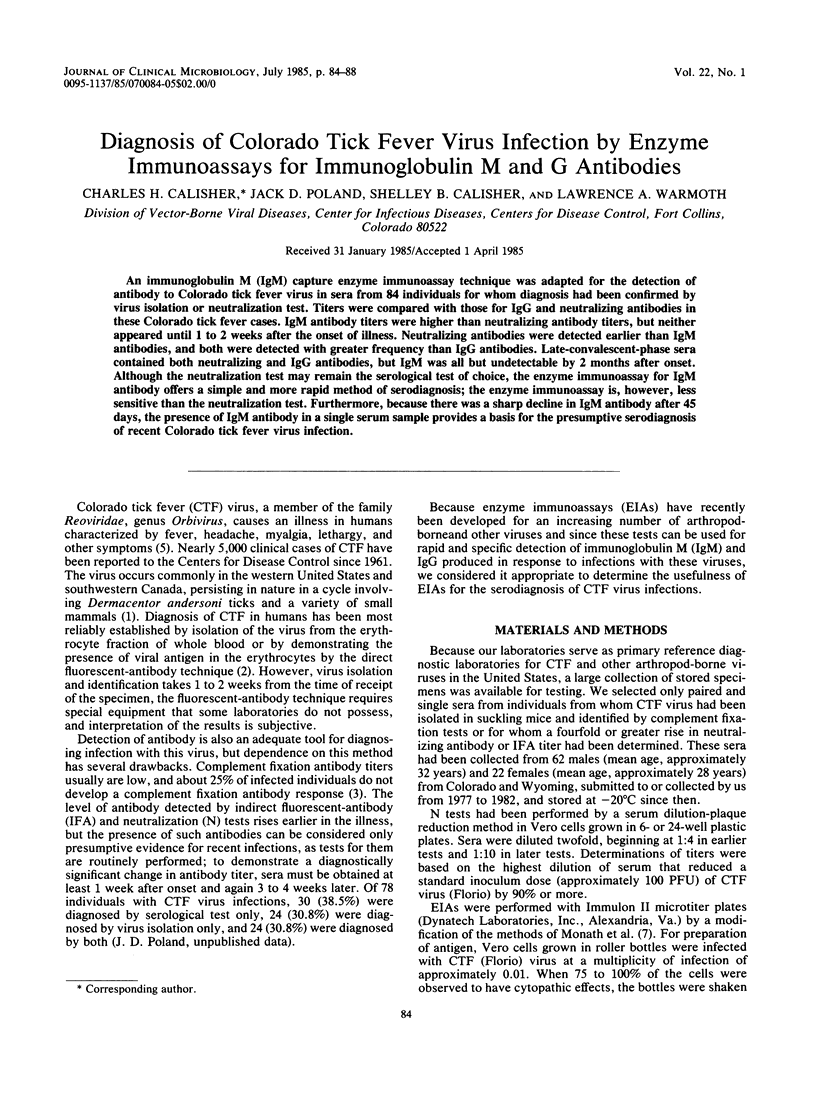
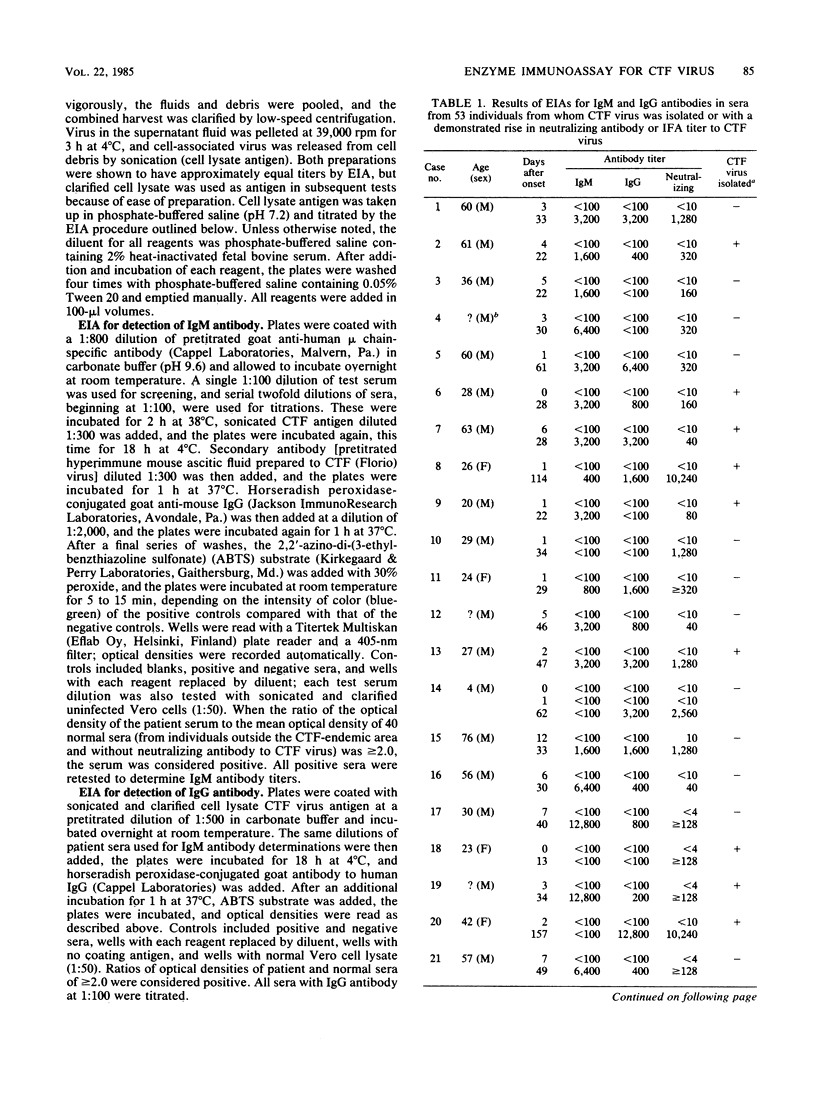
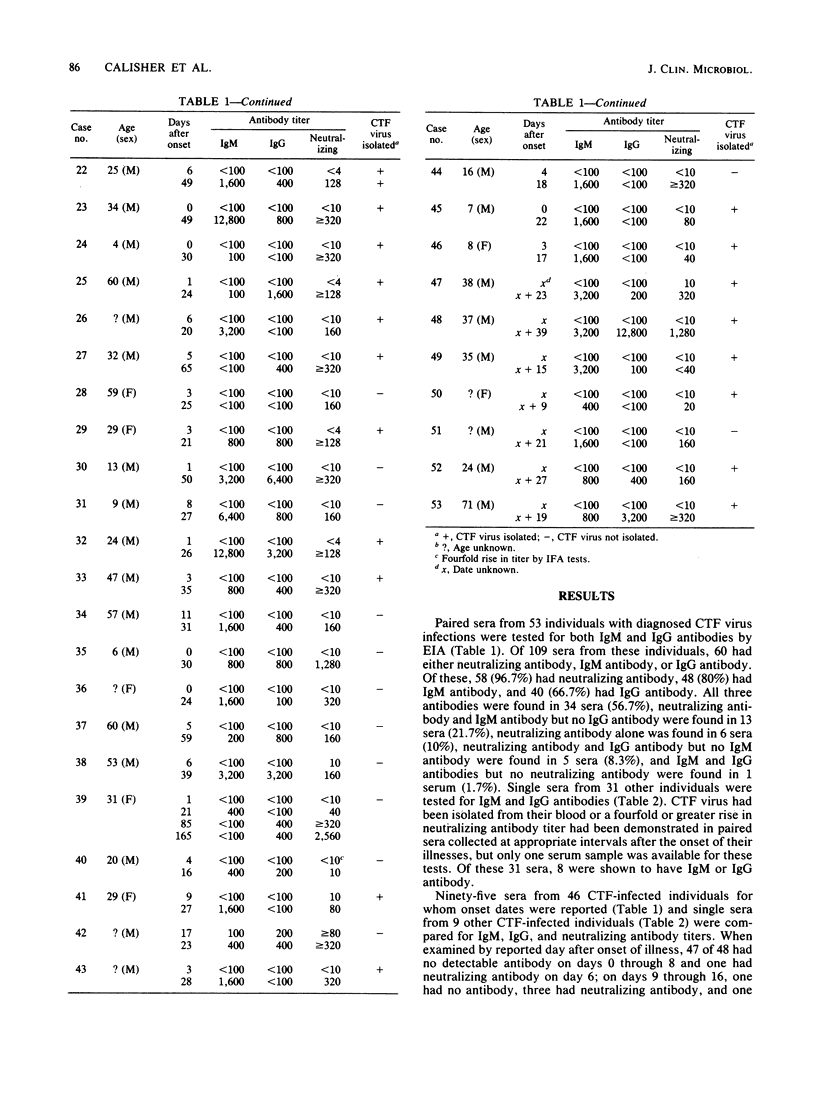
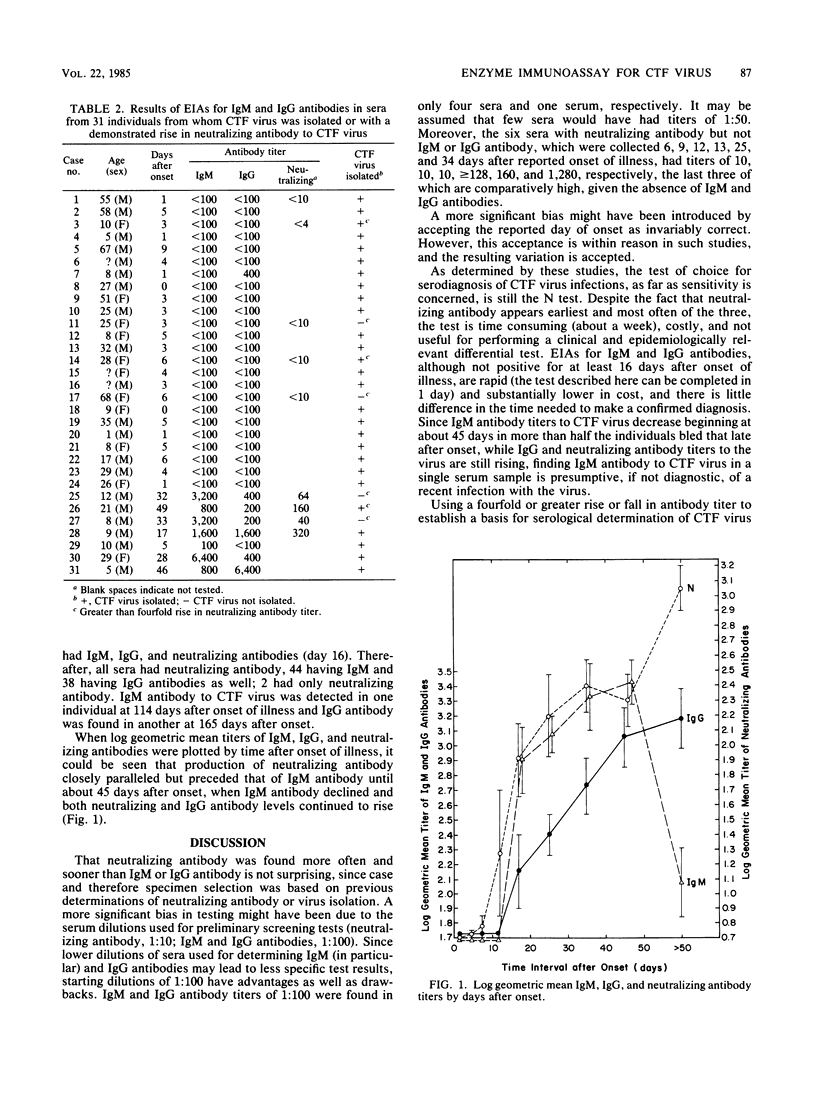
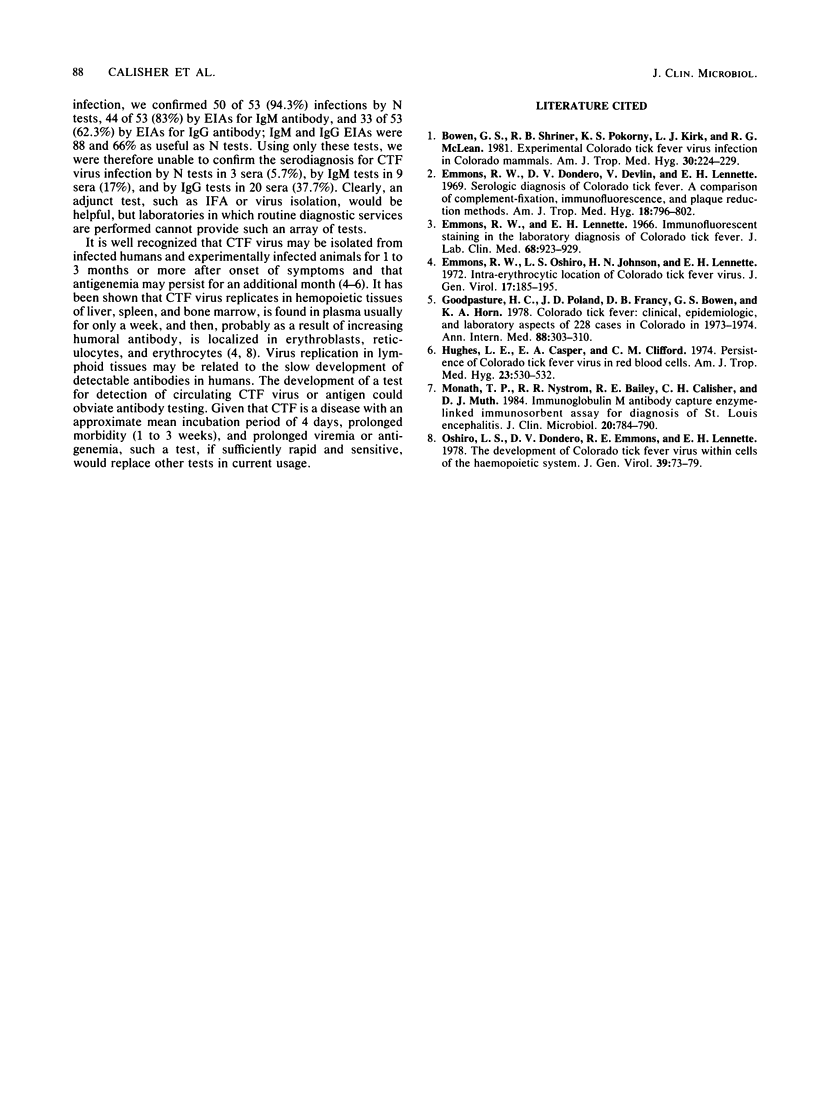
Selected References
These references are in PubMed. This may not be the complete list of references from this article.
- Bowen G. S., Shriner R. B., Pokorny K. S., Kirk L. J., McLean R. G. Experimental Colorado tick fever virus infection in Colorado mammals. Am J Trop Med Hyg. 1981 Jan;30(1):224–229. doi: 10.4269/ajtmh.1981.30.224. [DOI] [PubMed] [Google Scholar]
- Emmons R. W., Dondero D. V., Devlin V., Lennette E. H. Serologic diagnosis of Colorado tick fever. A comparison of complement-fixation, immunofluorescence, and plaque-reduction methods. Am J Trop Med Hyg. 1969 Sep;18(5):796–802. doi: 10.4269/ajtmh.1969.18.796. [DOI] [PubMed] [Google Scholar]
- Emmons R. W., Lennette E. H. Immunofluorescent staining in the laboratory diagnosis of Colorado tick fever. J Lab Clin Med. 1966 Dec;68(6):923–929. [PubMed] [Google Scholar]
- Emmons R. W., Oshiro L. S., Johnson H. N., Lennette E. H. Intra-erythrocytic location of Colorado tick fever virus. J Gen Virol. 1972 Nov;17(2):185–195. doi: 10.1099/0022-1317-17-2-185. [DOI] [PubMed] [Google Scholar]
- Goodpasture H. C., Poland J. D., Francy D. B., Bowen G. S., Horn K. A. Colorado tick fever: clinical, epidemiologic, and laboratory aspects of 228 cases in Colorado in 1973-1974. Ann Intern Med. 1978 Mar;88(3):303–310. doi: 10.7326/0003-4819-88-3-303. [DOI] [PubMed] [Google Scholar]
- Hughes L. E., Casper E. A., Clifford C. M. Persistence of Colorado tick fever virus in red blood cells. Am J Trop Med Hyg. 1974 May;23(3):530–532. doi: 10.4269/ajtmh.1974.23.530. [DOI] [PubMed] [Google Scholar]
- Monath T. P., Nystrom R. R., Bailey R. E., Calisher C. H., Muth D. J. Immunoglobulin M antibody capture enzyme-linked immunosorbent assay for diagnosis of St. Louis encephalitis. J Clin Microbiol. 1984 Oct;20(4):784–790. doi: 10.1128/jcm.20.4.784-790.1984. [DOI] [PMC free article] [PubMed] [Google Scholar]
- Oshiro L. S., Dondero D. V., Emmons R. W., Lennette E. H. The development of Colorado tick fever virus within cells of the haemopoietic system. J Gen Virol. 1978 Apr;39(1):73–79. doi: 10.1099/0022-1317-39-1-73. [DOI] [PubMed] [Google Scholar]


